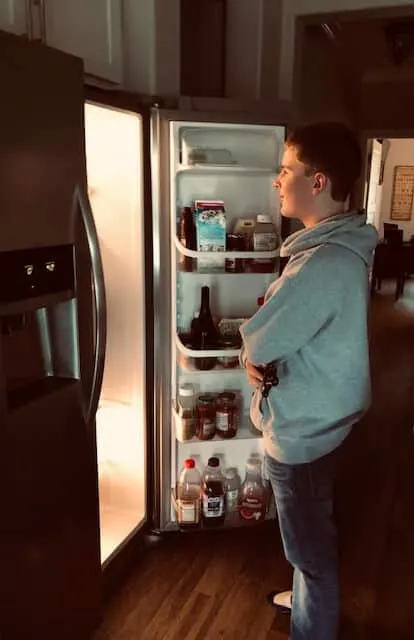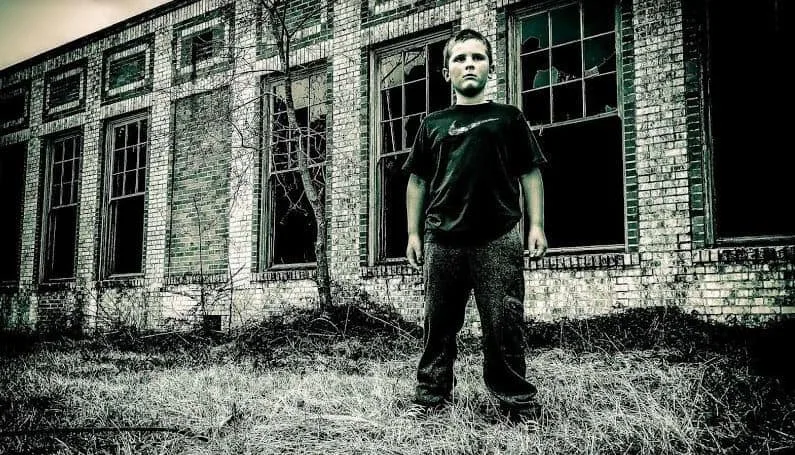At this very moment, energy is being lost in your home. Money is literally seeping out through inefficiencies in your home’s thermal envelope and being lost from inefficiency practices and home routines.
If you are wanting to learn how energy is wasted and what you can do to stop it, here’s what you need to know.
How is energy wasted at home? The primary ways that we waste energy at home include:
- Leaving the refrigerator door open trying to decide what we want.
- Leaving lights on
- Running ceiling fans in unoccupied rooms
- Wasting food
- Old, inefficient appliances
- Inefficient heating and cooling practices
- Breaks in the thermal envelope of your home
- Phantom or vampire energy waste
According to the US Energy Information Administration, the average monthly electric bill is $111.67 based on a study published in 2017. That average has only increased as more always-on electronic devices migrate into homes and the general cost of electrical services rise.
Read on to learn more about each of these energy waste sources in your home and what you can do to reduce your monthly energy bills.
Refrigerator Loitering

Each time you open the refrigerator and freezer, money spent to cool the air inside flows out. Where energy waste comes into play is when we stand with the door open, staring into it, contemplating what we want. My son used to be the worst about this! Needless to say, it drove me crazy.
As much as 7% of the refrigerator’s total energy use can be attributed to waste in this way if we are not mindful of our habits (source). Along with managing your own refrigerator loitering, make sure to reinforce this with the rest of your family.
Also, be mindful when returning from the grocery store and loading the refrigerator. Leaving the door open while you search through bags for items allows all of the cold, conditioned air that you paid for to escape. Empty grocery bags and identify refrigerated and frozen foods first so that you can quickly load them in the fridge or freezer. Simple adjustments like this make a difference!
A Well-Lit Home Is…Costly!
According to the Student Energy website, about 12% of a household’s monthly energy use can be attributed to lighting. Fortunately, LED lighting is quickly becoming the defacto lighting solution for homes but that doesn’t mean we should overlook this energy savings opportunity.
You can automate energy savings when it comes to lighting. I use occupancy sensors in rooms throughout my home where people often forget to turn off the light. Hallways, closets, even the pantry. Those are areas where people walk in for a moment, leave an often forget to turn off the light.
And when the end of year holidays roll around, by all means, invest in some LED outdoor lighting if you still have the old incandescent style stored in your attic. These can save up to 90% in electricity costs during the holidays.
To learn some easy and inexpensive ways to supplement your lighting using simple solar powered solutions, read How To Get Started With Solar Power (Simple Solutions!).
Ceiling Fans Waste Energy When No One Is In The Room

This one is so easily overlooked. For years we were told to turn back the thermostat and turn on the ceiling fans. The science was valid but the instructions were flawed.
Since fans do not actually cool a room but rather circulate the air, they are only effective when you are actually in the room. If the room not occupied, running the ceiling fan doesn’t really do anything except waste energy. Although it uses much less than a central air conditioning system it isn’t really doing anything if no one is in the room (source).
Wasted Food = Wasted Energy
Most people don’t think of this one but there is a lot of energy wasted as a result of tossing food in the trash. In the home, consider the energy that was used to cook that food in the first place. How much additional time did the oven or stove run cooking that food that was never consumed? That’s money wasted. And it adds up!
If you want to really appreciate the total impact of food waste across the country, watch this short video from It’s Okay To Be Smart.
Old, Inefficient Appliances
Like it or not, older appliances tend to be less energy efficient than newer models. Modern innovations and Energy Star certification testing has continually raised the bar on energy efficiency in home appliances.
In fact, Consumer Reports noted that families with energy efficient appliances save over $500 annually on energy costs when compared to old, inefficient ones (source).
This doesn’t mean it’s worth it to go out and replace all of your appliances with Energy Star certified upgrades. There’s a lot to consider before you make that investment. I’ve written a complete guide on how to determine if an energy-efficient appliance upgrade makes sense for you. I suggest reading first before making those upgrades.
Is it time to upgrade? Read What Appliances Are Worth Upgrading? Here’s The Math!
Inefficient Heating and Cooling Practices
It’s important to understand the various ways that you may be wasting energy due to Inefficient Heating and Cooling Practices
Dirty filters prevent sufficient air movement. This means that your system has to work harder to cool and heat your home.
Closing vents in unoccupied rooms will impair your system’s ability to run efficiently. Years ago we were taught to close vents in guest bedrooms to save money on energy. This has proven to actually have a negative effect on your heating and cooling system.
These systems are sized to condition air in certain square footage. When we try to alter the route of airflow it prevents the system from operating efficiently. Who knew?
Leaving the thermostat at the same temperature all the time wastes a significant amount of energy. When the family is gone to work and school all day but the system continues working to keep the house temperature the same, money is lost heating or cooling an empty home.
You can cut energy costs from your heating and cooling bills as well as many other electrical devices. Best of all, you can automate it and save money without even thinking about it! Click here to learn how to automate your energy savings!
Breaks In The Thermal Envelope Of Your Home

If you open your refrigerator or freezer you will likely see a rubber seal that lines the door. This seal compresses when the door is closed to create an air-tight space so that cold air is not lost.
The thermal envelope of your home is meant to work in much the same way. Insulation helps to create a thermal barrier between the harsh outdoor temperatures and your living space.
The problem is, insulation is not air-tight. It is designed to provide resistance but is not an air-barrier. So basically, air is potentially leaking out through cracks around windows, doors, light fixtures, and outlets throughout your home.
Read all about sealing air leaks and other energy-efficiency strategies in Is My Home Energy Efficient? Here’s How To Know!
Phantom (or Vampire) Energy
What is phantom energy? Phantom energy, also known as vampire energy or phantom load, is the energy consumed by an electronic device when it is not actively being used.
Is unplugging appliances to save energy a myth? No. Today’s appliances often consume power even while turned off. This is known as phantom energy. Multiple studies have confirmed that phantom energy is a real and significant energy cost for consumers, costing the average homeowner close to $200 per year and in some cases over a quarter of the annual energy costs for a home!
Many electronics do not truly shut off. They simply go into a powered-down-but-ready-state, continuing to seep small amounts of electricity hour after hour, day after day.
You stand to lose hundreds of dollars every year to phantom energy waste. And that’s not just an opinion. Multiple studies have confirmed that anywhere from 10%-33% of monthly energy costs are directly related to phantom power consumption.
Did you know that just leaving a computer on 24 hours per day can waste over $100 every year in energy costs? That’s just one device! (source)
Get all of the facts on phantom energy. Read Phantom Energy: Facts, Examples, And Real Solutions!
How To Stop Being An Energy Vampire

So now you know. Your home is suffering from energy waste. The question is, what can we do about it? The truth? A lot!
As the homeowner, you are the keeper of its energy efficiency. You can control the vampire energy waste in your home. Let’s get to it!
How To Stop Being An Energy Vampire? Take the following steps to immediately begin reducing energy waste and lower your monthly energy bills:
- Decide what you want before you open the fridge. Limit refrigerator loitering!
- Turn off lights and ceiling fans in unoccupied rooms
- Don’t cook more than your family will consume.
- Keep filters clean, vents open, and your HVAC system serviced annually.
- Upgrade to energy-efficient appliances when your old ones are ready for the dump.
- Air-seal leaks throughout your home
- Control phantom energy use by manually unplugging or installing power-breaks between devices and outlets.
And that is just the beginning! Simple things like washing clothes in cold water and so many other simple solutions are available for you. Want even more ways to save money on energy costs? Read Why Is My Electric Bill So High? Here’s The Answer!
There are so many opportunities to reduce phantom energy waste throughout your home. What ideas can you think of? Need ideas?
Click here to read 20 Tips To Reduce Your Electric Bill – #16 Is Amazing!
You can automate your phantom energy savings! Read What Can A Smart home Do? Complete Guide With Pictures!
As a homeowner, I am constantly experimenting with making the structure of my house more energy-efficient, eliminating pests, and taking on DIY home improvement projects. Over the past two decades, my family has rehabbed houses and contracted new home builds and I’ve learned a lot along the way. I share my hard-learned lessons so that you can save time and money by not repeating my mistakes.

